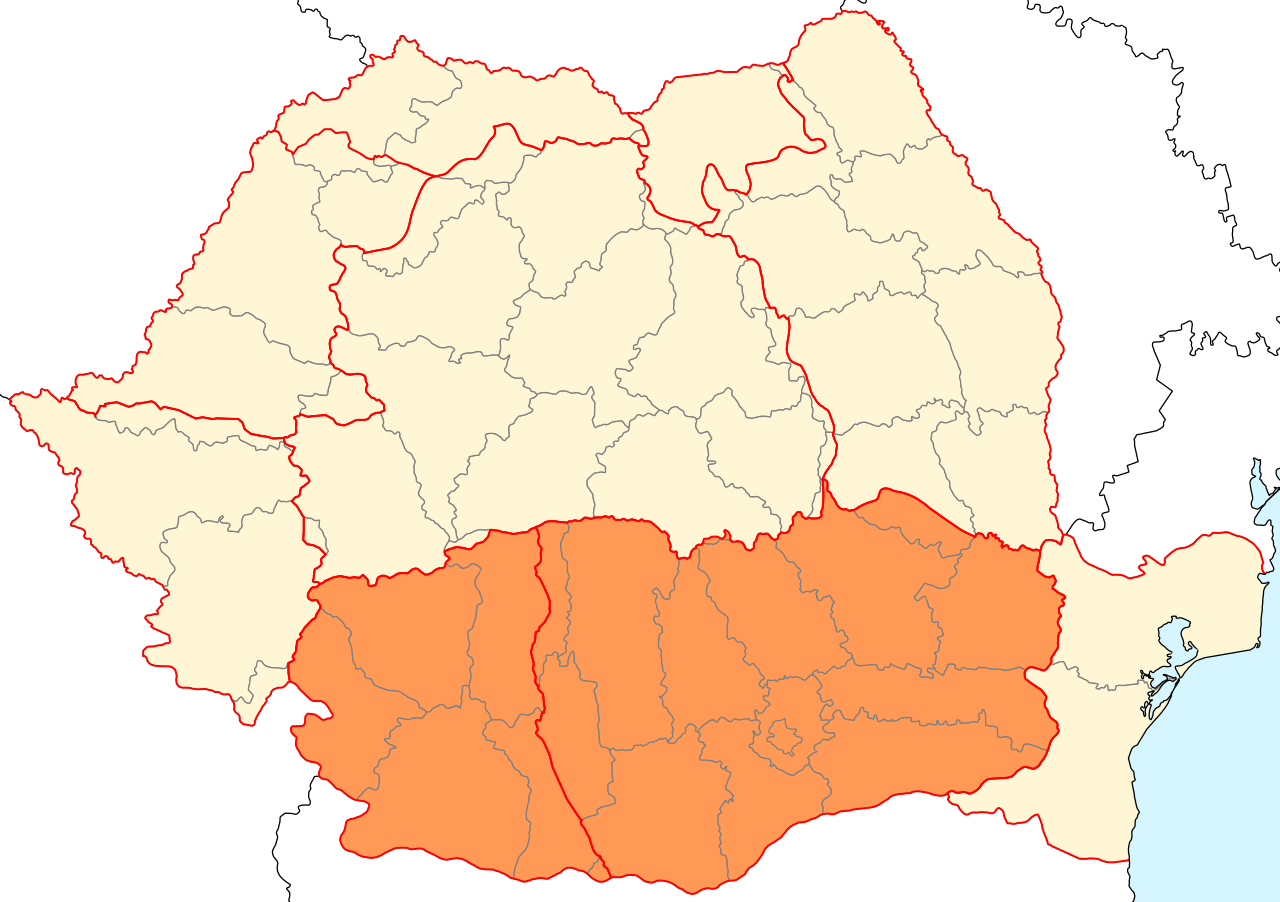 Wallachia is located in the south of Romania. Its northern border is marked by the Southern Carpathians, the river Danube on the south. Land, mountainous in the north, and towards the south it gradually becomes plain highlands and lowlands, it stretches from the Iron Gate in the west to Dobrogea in the west. Aluta river (Olt) divides Wallachia into two parts: eastern, that is, Oltenia, and western – Multany (rum. Muntenia).
Wallachia is located in the south of Romania. Its northern border is marked by the Southern Carpathians, the river Danube on the south. Land, mountainous in the north, and towards the south it gradually becomes plain highlands and lowlands, it stretches from the Iron Gate in the west to Dobrogea in the west. Aluta river (Olt) divides Wallachia into two parts: eastern, that is, Oltenia, and western – Multany (rum. Muntenia).
HISTORY
Before, in the 19th century. the Romanian state was established, Romanians were called Wallachia in Europe, and their land in Wallachia. These terms are rarely used today in Romania, because they are negative – created in the 3rd century. from a Gothic word meaning "alien”. The Romanians themselves describe Wallachia as "Tara Romaneasa” (land of Romanians).
Founded by Prince Radu Negru in 1290 r. the principality remained under Hungarian rule until 1330 r., when Basarab I defeated the Hungarian king Charles I and proclaimed the independence of Wallachia. Wallachian princes (voivode) they built the first cities – Cimpulung, Curtea de Arges and Tirgoviste – using the natural cover of the mountains. W XV w. Bucharest gained the upper hand, and he too later became the provincial capital.
After w 1396 r. The Turks paid tribute to Bulgaria, Wallachia faced a new threat. W 1417 r. the voivode of Mircza the Old was forced to accept the Turkish sovereignty. Other Wallachian hospodars, like Wład Palownik and Michał Waleczny, they opposed the Turks more than once, refusing to pay tribute. W 1859 r. Wallachia and Moldavia merged into one state under the rule of Prince Alexander Jan Cuza, which opened the way to the creation of a modern state.
Olten
Foreign tourists usually avoid Oltenia, because its landscapes give way to a bit of the wild scenery of neighboring Transylvania, of its monuments, little remains of the disgraceful turmoil of war. Nevertheless, it is worthwhile to go this way and take a look at historical mementoes from the Roman past of these lands - in Oltenia there are especially many of them (although not necessarily in good condition, and the Oltene dialect looks more like Latin than the other Romanian dialects.
From time immemorial, Oltens were famous for their wealth and thrift. It was said, that Olteńczyk combines the merchant characteristics of the Greek, Armenian and Jew, and his cleverness is greater than these three nations combined. The rich folk culture is still alive here. Country houses are usually interestingly decorated, multi-storey in piedmont regions, decorated with columns, characteristic galleries along the first floor or shaded terraces. A few defensive buildings called cula have survived (erected at times of the threat of Turkish invasions), with thick walls, forged door frames and arrowslits at the top.
In Oltenia you can visit the city of Drobeta-Turnu Severin, to the well-known and popular in antiquity spa Baile Herculane, to Tirgu Jiu on the Jiu River, with sculptures by Constantin Brincusi on display in the open air, an artist of world renown (including the famous Kiss Gate), to the fortified monastery of Tismana among the wooded hills and to the historic capital of this land – Domestic.
National (Craiova) in 15th-century documents it was mentioned as Kraljowa (royal). It was founded by Kazimierz Jagiellończyk, Polish and Czech king, probably in the period, when he waged the war for Transylvania. The city was destroyed several times by the invaders, and once by a terrible earthquake. Therefore, not many monuments have survived there: only the seventeenth-century church of St.. Dmitri and several Art Nouveau tenement houses. The Orthodox Church of Our Lady of Morw from the interwar period; it was erected – as the legend says – in place, where a mulberry tree used to grow.
THE IRON GATE
The most beautiful part of the Danube course is its gorge, called the Iron Gate (Iron gates), separating the Southern Carpathians from the East-Weber Mountains. On the stretch of length 130 km the river flows through a valley narrowing even to 150 m (for the breakthrough, on the east, expands to 1,5 km). The most famous place is Cazanele (boilers) – vertical rock walls, between which the water foams, hitting numerous cataracts and eddies. An important communication route led through this strategic point in antiquity. The Romans built an impressive bridge here (1,5 km long), and on a rocky island, located in the middle of the river at the bottom of the gorge, they built a fortress.
W XV w. the fortress was captured by the Turks, calling her Ada Kaleh; they kept her up to 1909 r. The picturesque surroundings attracted travelers and inspired writers. On the island, they put their novels Teodor Tomasz Jeż and Mor Jokai in action (The Golden Man), and in the Iron Gate itself – Jules Verne (Mysterious pilot). Ada Kaleh was sunk, when the Danube was blocked by a huge dam. The artificial water reservoir has spoiled the beauty of the scenery a bit, but he improved navigation on this dangerous stretch of the river. Ancient Monuments – elements of the fortress and road – moved to other places, mainly to the nearby islet of Simian.